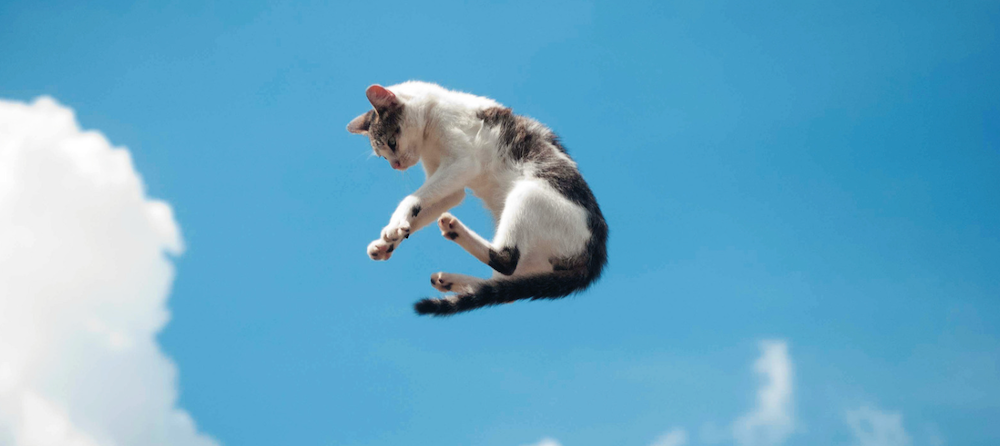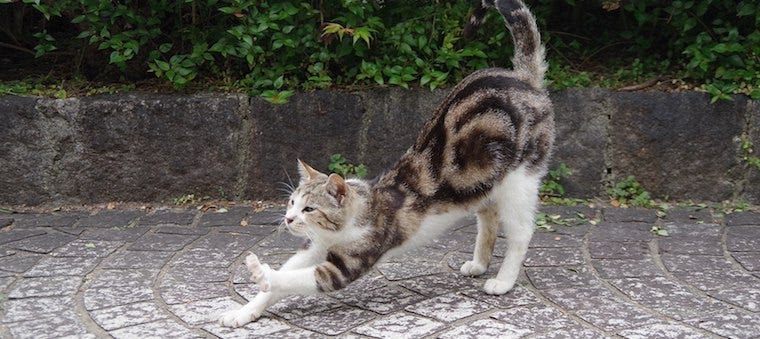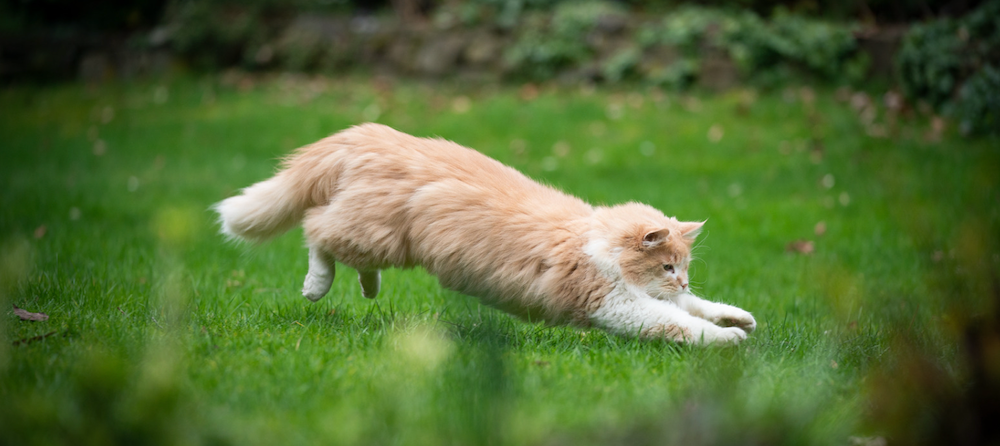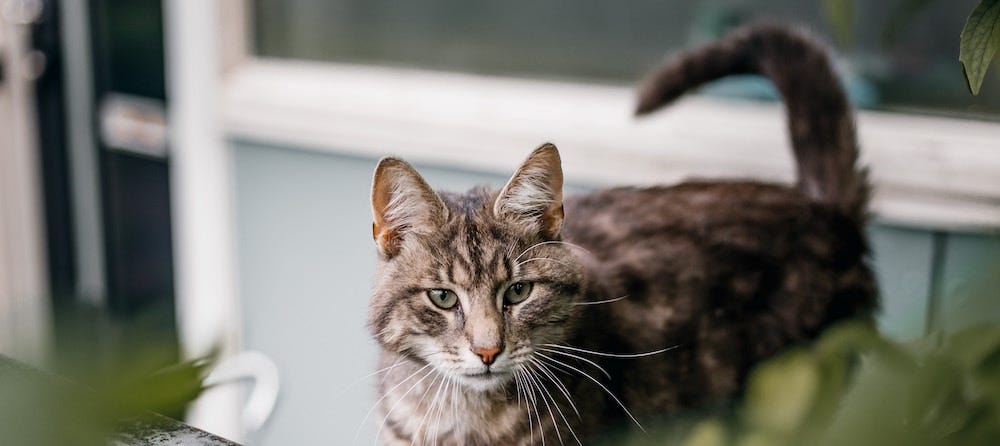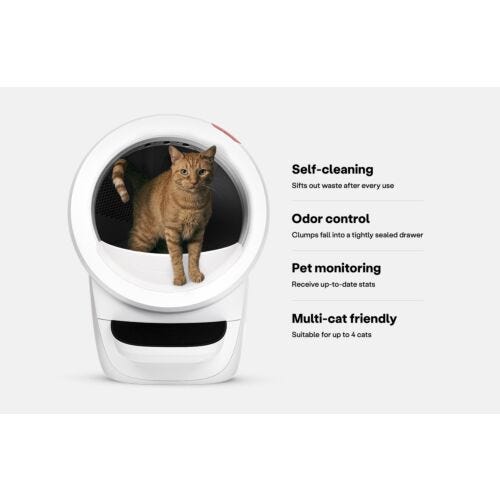An age-old question: Do cats always land on their feet? The short answer is no, not always—but due to cats’ impressive “righting” reflex and slow terminal velocity, they do land on their feet an astonishing amount of the time. Even more shocking? Cats that fall from great heights may fare better than cats that fall short distances.
How is that possible, you might be wondering? Before we delve into the explanations for this phenomenon, please take heed: Do NOT put your cat to the test by throwing them out a high window!
Why do cats like high places?
Have you ever spotted your cat perched on top of your kitchen cabinets or a towering book shelf? Many cats enjoy climbing and like to observe from high places. Cats are ambush predators by nature, which means they like to hunt from cover. They also have an amazing sense of balance.
Why do cats (almost) always land on their feet?
There are three important factors as to why cats always seem to land on their feet.
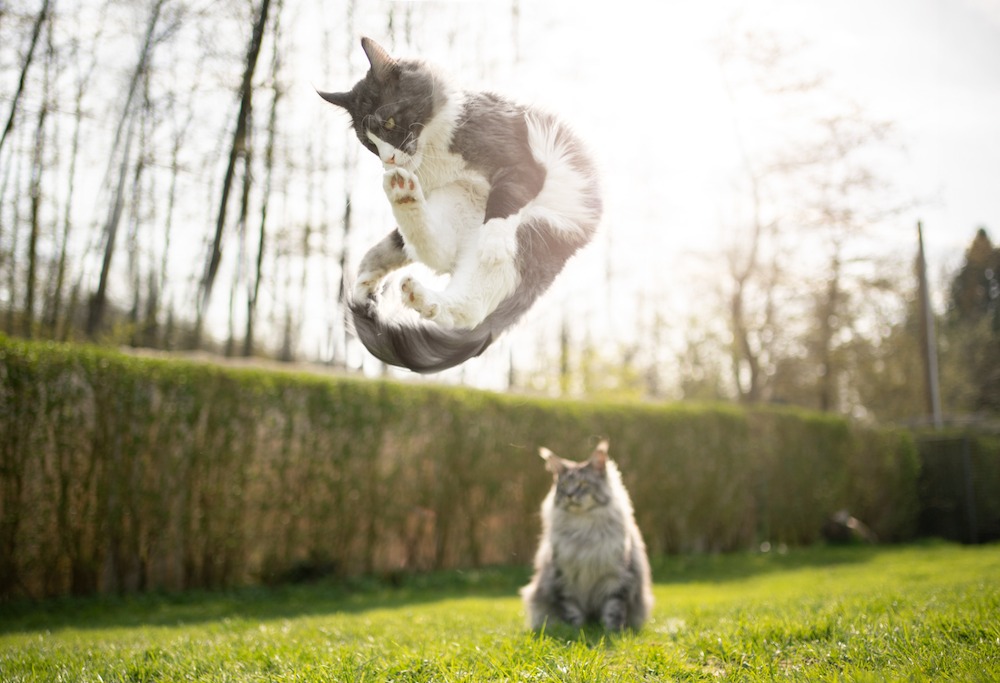
Righting reflex
Cats may have evolved past living in trees, but they retained the aerial “righting” reflex that allows them to land safely if they fall from a high branch. This righting reflex kicks in virtually any time your cat accidentally rolls off the couch, falls from the windowsill, or is pushed by a naughty feline sibling from the top of the cat tree.
Because of this reflex, a cat can twist their body like a skydiver, spin their tail in order to position their feet under them, and land with, ahem, dignity.
Terminal velocity
Terminal velocity—the speed at which the downward force of gravity is matched by the upward push of wind resistance, resulting in a constant speed—plays a hand in those incredible stories about cats falling out of a 26-story window, landing on their feet, and surviving. Think of it as your cat’s “flying-squirrel” stance.
It turns out that cats reach terminal velocity at a slow speed compared to large animals and people. According to the 1987 study by veterinarians Wayne Whitney and Cheryl Mehlhaff, an average-sized cat with their limbs extended achieves a terminal velocity of about 60 mph, while an average-sized man reaches a terminal velocity of about 120 mph.
Shock-absorbing legs
Cats’ springy, compliant legs help them expertly absorb the shock of a hard landing. The fact that a cat’s legs are angled under the body, rather than extended downward like a human’s, also allows for a less direct force of impact. (Their muscular legs also account for cats’ jaw-dropping leaps into the air.)
How far can a cat fall?
Cats have fallen from 200 feet or higher and lived to see another day. A cat named Sabrina survived an incredible 32-story fall in New York City with just a mild lung puncture and a chipped tooth; another cat named Jommi fell from a 26-story building in Hong Kong reportedly without a scratch (ripping through a tent on the way down).
Strangely enough, past studies have indicated that cats actually have milder injuries when falling from heights of 7 stories or above—that’s right, higher is better! How is this possible? One theory is that cats reach terminal velocity after 7 stories, effectively slowing their speed to allow for that righting reflex and correct shock-absorbing stance.
However, a more recent study indicated mixed results when it comes to height of fall and cat survival rate. Either way, it’s best to assume that there is no “safe” height from which to fall when it comes to felines.
And if your cat does fall from a great distance, land on their feet, and walk away? Don’t just assume they’re fine. Cats are very adept at hiding their pain, so be sure to take your kitty to the vet as soon as possible for assessment. A long fall can result in broken limbs, punctured lungs, and shattered teeth or jaws.
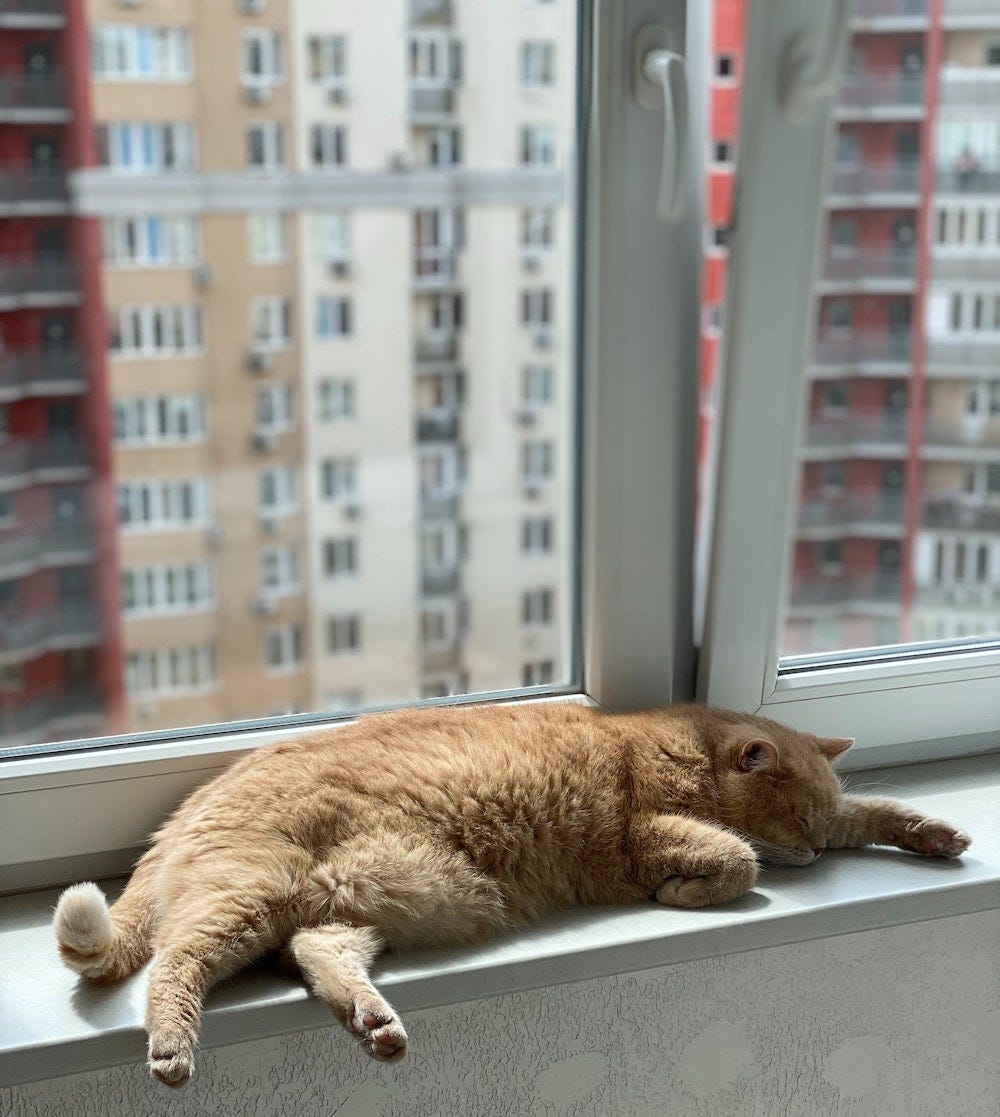
Avoiding high-rise syndrome
Veterinarians see “high-rise syndrome,” or when curious cats fall from a window, balcony, or fire escape of at least two stories high, occur most often in young, male cats. Even though cats usually survive these falls (and we now know why), significant injury can still occur. Not only may this result in lifelong pain for your kitty, but an ER visit and average fracture repair can cost upwards of $3,000. Ouch all around!
To avoid high-rise syndrome, keep your windows tightly fastened and make sure all your windows have secure screens. If you do open screened windows, keep an eye (and ear) on your cat all the same—even though it’s unlikely they would scratch at the screen and create a hole large enough to squeeze through, you shouldn’t underestimate a particularly curious kitty.
Give your cat a chance to explore high places safely with modern cat furniture. Cat trees like the Cat Pyramid and Cat Tower can offer kitty a new perspective at 63.82'' and 53.86'', respectively. Or hang a set of Cat Shelves as high on the walls as you’re comfortable with and watch as kitty conquers new heights.
Do cats always land on their feet? No, but now you know why they so often do!
Sources:
Photo by Alexandr Mamedov via Unsplash
